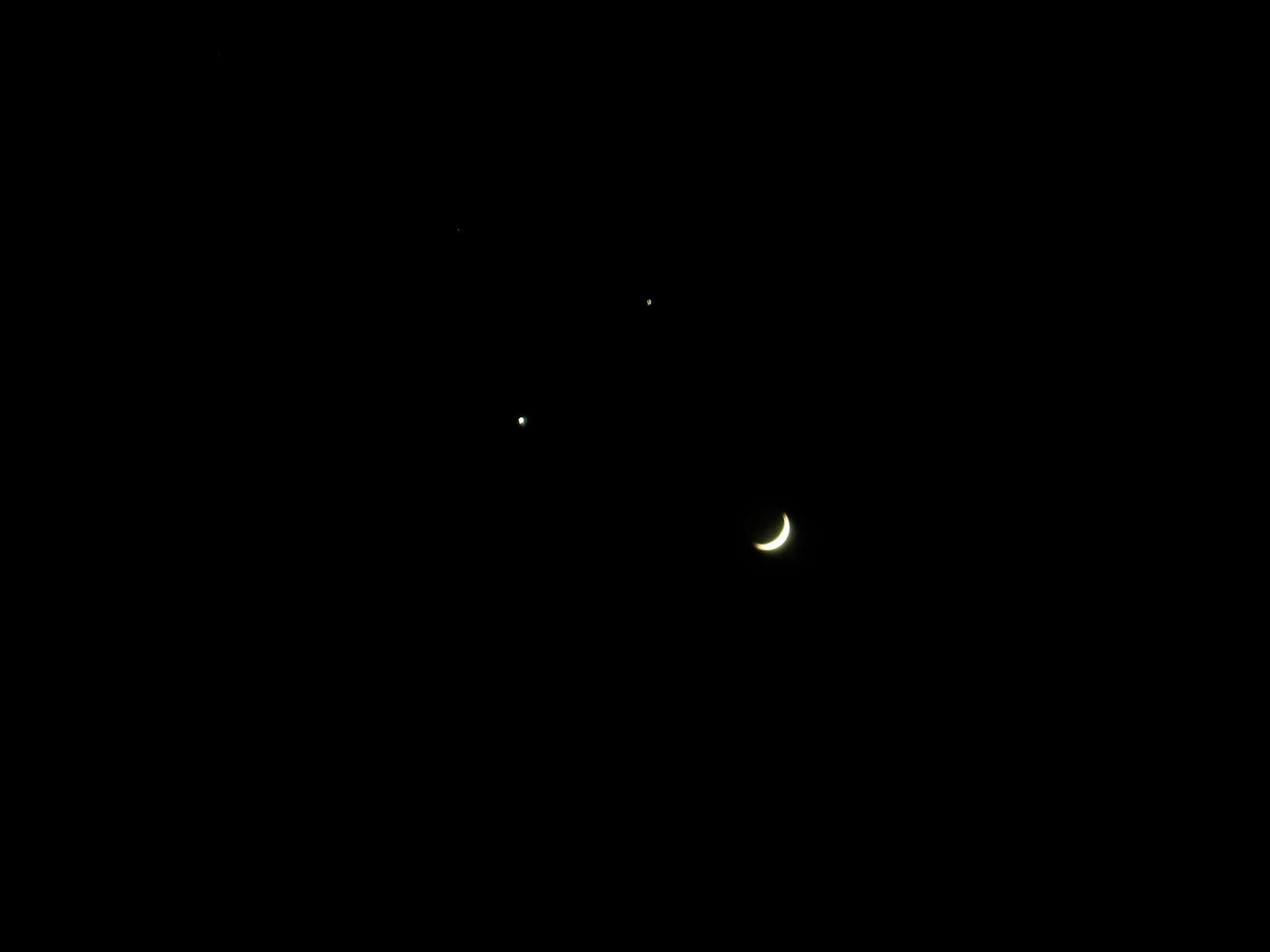Get ready for a celestial treat! On April 25, 2025, skywatchers across the globe will be able to witness a rare and heartwarming sight—the Smiley Conjunction.
If you look up at the sky just after sunset, you’ll see the Moon, Venus, and Saturn aligned to form a smiley face in the evening sky.
Here’s everything you need to know about the event—and how to photograph it like a pro.
What is the Smiley Conjunction?
The Smiley Conjunction is a rare planetary alignment where two bright planets (in this case, Venus and Saturn) appear near the crescent Moon to form what looks like a smiley face in the sky.
The Moon acts as the “mouth,” and the planets sit above it like “eyes.”
This celestial alignment isn’t just fun to look at—it’s also visually stunning and easy to spot even with the naked eye.
Image below: Saturn instead of Jupiter

When and Where to See It
The Smiley Conjunction will be visible on April 25, 2025, shortly after sunset. The best viewing window is from 30 minutes to 1 hour after sunset, before the planets dip below the horizon.
Visibility by Region:
-
North America: Excellent visibility just after dusk. Look toward the western horizon.
-
South America: Great view in the early evening.
-
Europe: Visible low in the southwestern sky.
-
Africa: Clear skies in many regions will offer a great view.
-
Asia: Best seen in South and Southeast Asia, though lower on the horizon.
-
Australia and New Zealand: Visible, but the "smile" may be slightly tilted due to perspective.
Check your local weather forecast and a stargazing app to find the precise time and location for your area.

How to Photograph the Smiley Conjunction
You don’t need a telescope to capture this cosmic smile—just the right gear and settings. Here are some photography tips to help you take a sharp and memorable photo of the conjunction:
1. Use a Tripod
Even with a smartphone, using a tripod keeps your camera steady. For DSLR or mirrorless users, a carbon fiber tripod like the ProMediaGear TR344L offers excellent stability without weighing you down.
2. Go Wide and Low
Use a wide-angle lens (14mm to 35mm) to capture the sky and the landscape. Position your camera low to include interesting foregrounds—a mountain, a tree, or a building can add context and drama.
3. Manual Settings Are Key
-
ISO: Start at ISO 800 and adjust based on available light.
-
Aperture: f/2.8 to f/4 works well for low-light skies.
-
Shutter Speed: Around 1–3 seconds to avoid star trails but still catch the planets' glow.
4. Use a Remote or Timer
Avoid camera shake by using a remote shutter or your camera's 2-second timer.
5. Focus Manually
Autofocus can struggle in low light. Switch to manual focus and zoom in digitally to focus on a bright star or the Moon.
Bonus Tip: Include People or Landmarks
Want to make your shot more unique? Capture a silhouette of a person pointing at the sky, or include a famous landmark in your frame. This adds a storytelling element to your photo and makes it stand out on social media.

Look Up and Capture the Moment
The Smiley Conjunction of April 25, 2025, is more than just a pretty alignment—it’s a reminder to look up, slow down, and appreciate the sky's wonders. Whether you're a seasoned astrophotographer or just someone who loves stargazing, this event is something you don’t want to miss.
So grab your camera, head outside after sunset, and don’t forget to smile back at the sky.

